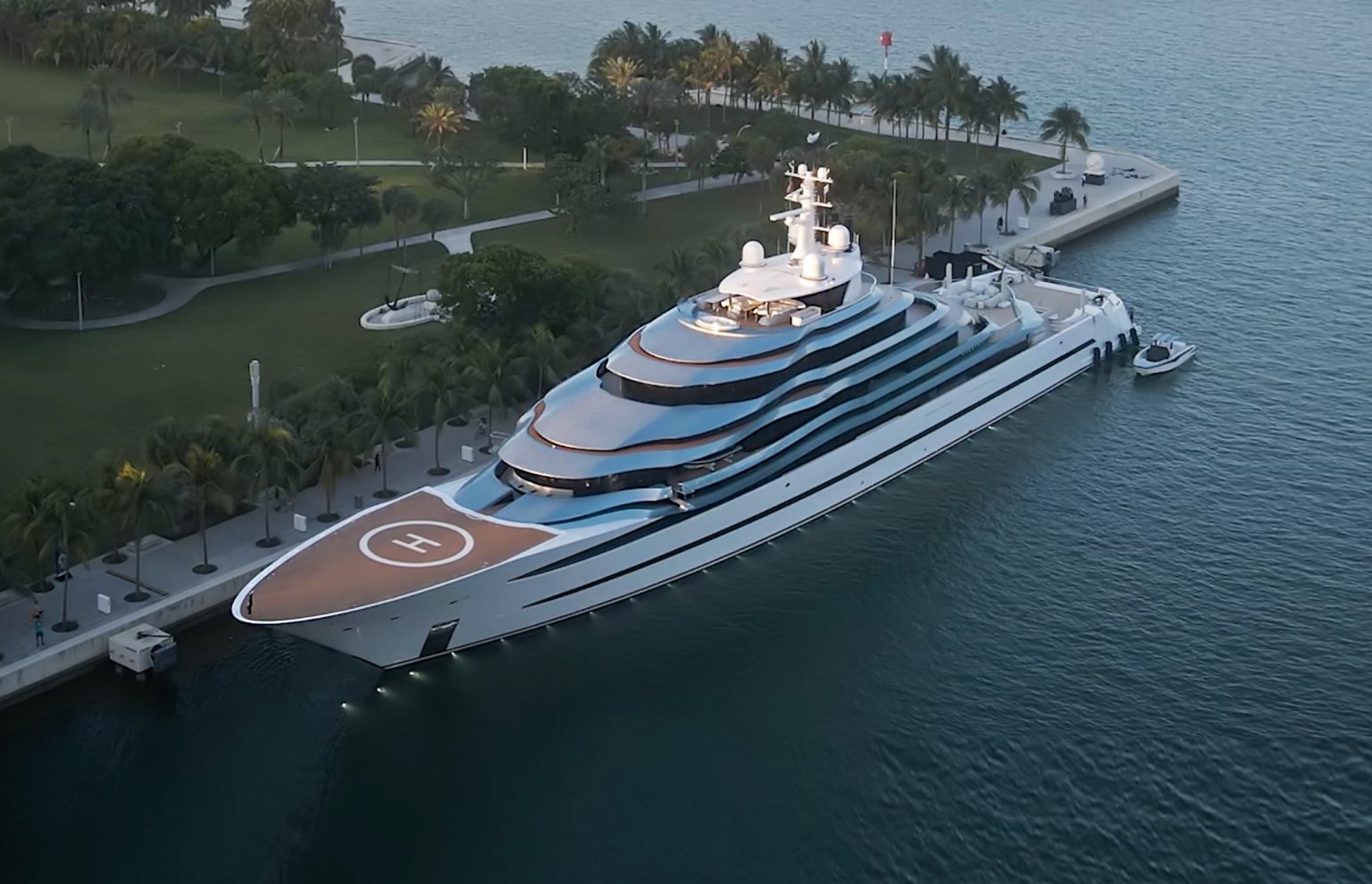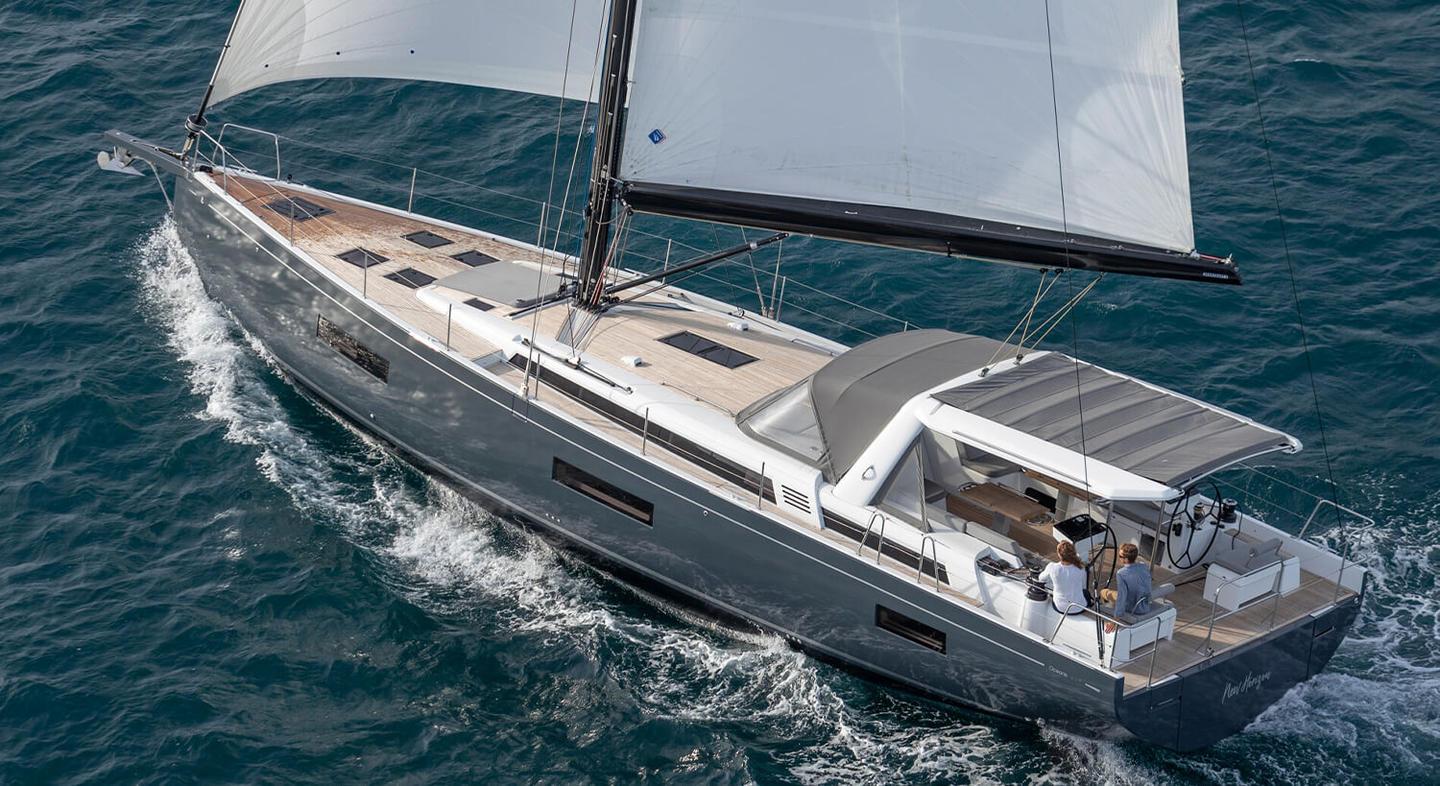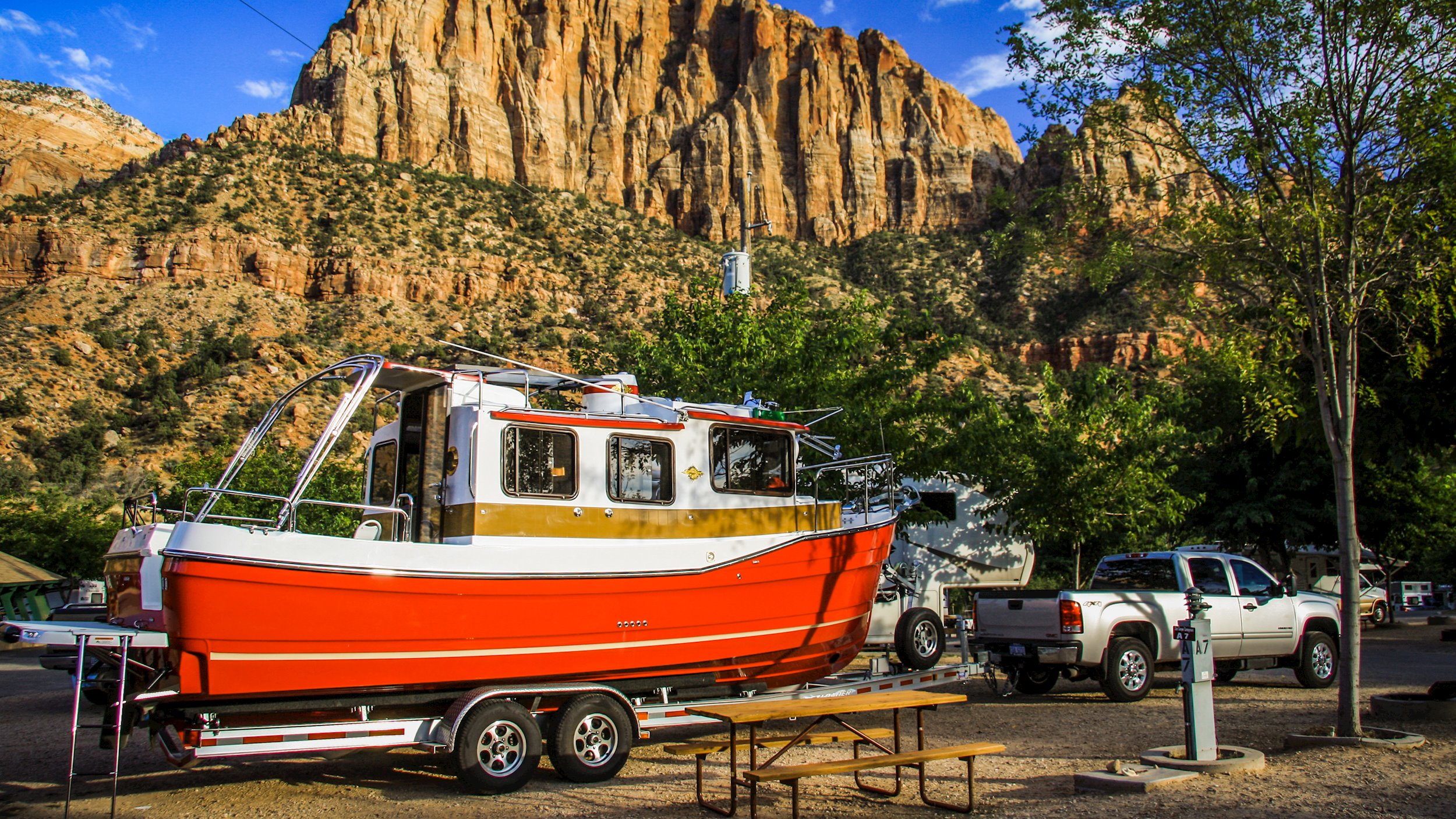So what makes a boat a yacht? Put simply, YachtWorld tends to classify vessels over 35 feet in length as yachts, particularly if they exceed 8.5 feet in width and cannot be towed by a car or truck without special permits. But it can get a bit more involved than that, so let’s take a deeper look.
Above: There is no doubt that the 361-foot superyacht KAOS by OceanCo is a full-blown yacht. Photo by Morgan Collins for YachtWorld.
People often use the term “yacht” to describe a large, private watercraft, though they might not be fully aware of what truly defines a yacht. Generally, yachts are classified by their size and several other characteristics, but it’s important to note that the language around boats and yachts is quite flexible. So, while a large Sportfish might typically be called a “yacht,” few will object to it being referred to as a boat. Conversely, you could even playfully call a 13-foot Boston Whaler Super Sport or a small Carolina Skiff a “yacht” for fun—nobody really needs to know the difference, right? In fact, it’s a common friendly tease to refer to a small dinghy, aluminum fishing boat, or bass boat as a “yacht” when a friend arrives in one.
To get a more thorough understanding, it’s useful to examine the various classes of yachts and the characteristics that differentiate them from each other, and from other types of boats. This exploration will clarify what sets a yacht apart from the great many categories and varieties of boats on the market, which includes a diverse array of watercraft, making the distinction between a yacht and boat clearer.
The Origin of Yachts
The word “yacht” is derived from the Dutch word for “hunter.” The first yachts were exactly that: pirate hunters. The Dutch navy built swift sailing vessels that could sail in the shallow waters of the low country to hunt buccaneers in the 16th century. It wasn’t long before the well-heeled of Europe—particularly the English—took notice of these unique ships and began to replicate and soon to race them. From the beginning, then, the yacht was a specialized, relatively expensive, private vessel intended for recreational use.
Above: A 2023 Beneteau Oceanis 60 sailing yacht underway on the water. Photo via Signature Yachts, Inc in Seattle, WA.
By the late 19th century, several important developments took place. Comparing and racing yachts meant that standards had to be set. The British classified yachts by their tonnage. The Americans use a classification based upon length, which prevails to this day. While they commenced as sailing vessels—and there are still sail-powered yachts, the steam engine supplanted the wind as the primary method of propulsion in the 1800s. By 1900, gasoline and diesel-powered engines were the propulsion of choice, as they still are on many vessels.
Size Matters
Should someone point out a sizable private vessel and ask, “Is that a yacht,” the proper answer is likely, “How long is it?” The typical maritime definition of a yacht is a private pleasure ship of at least 33 feet. As we stated at the outset, YachtWorld generally considers anything in the 35-40-foot range (or larger) a yacht. However, there are exceptions, as different kinds of boats can approach being that long that really don’t quite fit into yacht status, including some jumbo pontoon boats and large walkaround day boats.
On the flip side, an engine-powered watercraft under 30 feet is not usually considered a yacht, but there are some boats referred to as pocket yachts that have yacht-like amenities, and blur the line the other way. Another point of consideration we mentioned earlier is that if a vessel cannot be towed by a car or truck on a public roadway without special permitting (i.e. she is over 8.5-feet wide at her beam, and likely longer than 35-feet) than it’s likely to be considered a yacht.
Above: A Ranger Tugs trailerable trawler “pocket yacht” being towed by a pickup truck. Photo by Ranger Tugs.
That delineation of course, is just where our basic “entry-level” yacht begins. Yachts can range up in size astonishingly. Any yacht that is 79 feet long or longer is classified as a “large yacht.” Beyond a length of 130 feet, the vessel is typically called a “super yacht” (sometimes written as one word, superyacht). Sidebar: the current reigning champion for the longest yacht in the world is the super yacht Azzam, which is 590 feet in length. Another, longer yacht (REV) is currently under construction and nearly complete (these types of vessels typically require more than five years to complete).
Yachts are also classified according to what sort of water and wind conditions they can withstand. Let’s take a quick look at these classifications below:
- “Class A” Yachts are those that can handle winds of up to 45-50 miles-per-hour and approximately 13-foot waves in open seas. These types of offshore yachts are built to be self-sufficient in hostile seas while navigating the open ocean with winds surpassing force 8 on the Beaufort scale and include sportfishing yachts, motor yachts, large cruisers, superyachts and megayachts.
- “Class B” Yachts are often called “offshore vessels” and are built for navigating coastal waters within 200 miles of the shore.
- “Class C” Boats are vessels built to navigate inshore and nearshore, including waterways such as lakes, rivers and bays, and generally can handle waves between 3-4 feet before they begin to get into trouble.
- “Class D” Boats are vessels that can safely handle winds of 13-15 MPH and waves between 1-2 feet or less in sheltered waterways.Note: any vessel below Class B is referred to as a boat, hence the difference.
Waters of Operation And Accommodations
Yachts, from their inception, have been constructed to endure lengthy voyages on open water. Thus, the most likely place to see a yacht is in a deepwater location such as the Atlantic or Pacific Oceans. In conventional marine wisdom, vessels shorter than 30-feet are considered generally inadequate for handling big seas and the rough waters of the open ocean. Due to the length of swells offshore, extended voyages on the open sea are reserved for yachts (although there are some exceptions and opinions may vary). Thus, by definition, yachts are considered capable of extended cruises over more demanding water conditions in the open sea. To facilitate this, yachts tend to have a greater, more advanced cadre of instruments and deepwater equipment onboard than smaller recreational boats.
One of the obvious distinctions in this vein has to do with the ability of a yacht to provide shelter and accommodations for passengers during inclement weather on rough water. Some day boats and many smaller cuddy cabins and pocket cruisers have cabins (often called cuddies), which are narrow bunks for individuals. Whereas most yachts have actual bedrooms, not to mention full-size toilets (heads, as they are called aboard ships) and full galleys (kitchens) for food preparation. They store fresh water and wastewater and can generally hold more fuel.
Another distinction between boats and yachts is that yachts typically must be manned by professional crewmen (although again, this is not a hard-and-fast rule, as many modern yachts can be safely and comfortably driven by 1-2 people). Commercial ships and boats obviously have professional sailors. Yachts, being pleasure craft, need to employ individuals who have skills that are often beyond the private owners of the vessel. Often, the number of crew members will be double the number of potential guests on a yacht.
Big Wheels Turning
Large yachts and superyachts tend not to be as fast as many smaller vessels – although some are surprisingly quick. A typical cruising speed might be 12 knots (14 miles-per-hour). Although there are faster cruisers and sports cruises on the market that break this generality. The relatively slow cruising speed of very large superyachts and megayacths does not mean, however, that they have small engines. Large yachts have amazing large and highly-sophisticated power plants. A typical mid-sized yacht may have two large diesel engines that give it the ability to cruise at up to 20-30 miles-per-hour with top speeds that can exceed expectations.
By contrast, a center console or a large walkaround or cuddy cabin may have four outboard motors rigged to its transom with a combined horsepower of over 1,000 horsepower or more. Such gasoline engines, however, are not suited to the long-range cruising of the sea-going yacht and do not generally offer the same level of creature comforts and amenities.
Summary
We know that yachts are distinct from other private watercraft vessels in several ways. They are long vessels—a minimum of 33 feet long—constructed to allow the ability to cruise farther over deeper, rougher waters than other private craft. They are built to carry people and provide the same sort of amenities available on dry land, including: dining rooms, kitchens (galleys), cabins/sleeping berths, and restrooms (heads). As luxury vessels, there are usually any number of conveniences and comforts available, and these are often administered by professional crew members who outnumber the guests by a factor of two. If this seems opulent, it’s worth noting that there are an estimated 15,000 luxury yachts in the world today. And of course, many of these yachts are for sale on YachtWorld today!
Editor’s Note: This article was originally published in October 2020 and was last updated in April 2024.


